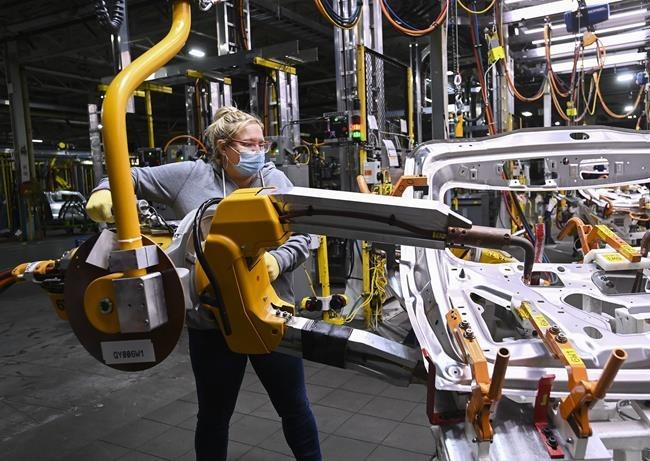TORONTO — Manufacturing companies that emphasize training, flexibility and benefits are better positioned to attract and retain female workers, something that's key as the industry faces a labour shortage.
That message is the theme of a three-day forum on women in the workforce by the Canadian Manufacturers and Exporters that wrapped up on Thursday, the eve of International Women's Day.
The number of women in manufacturing grew to more than 29 per cent in 2022, the highest share the industry has seen in the last four decades. But that pales in comparison to the overall Canadian workforce, which is roughly at gender parity.
CME chief executive Dennis Darby said it's not enough.
"We really have to do more," Darby said, addressing the attendees of the online forum during the opening speech on Tuesday. "It's time for us to collectively rewrite the narrative to erase outdated stigmas and showcase how innovative the manufacturing sector is today."
CME has targeted a goal of 100,000 women in manufacturing jobs by 2030, or a third of the sector's Canadian workforce.
The push to hire more women comes as the manufacturing industry struggles to fill positions across the board, with a lack of skilled labour making it hard to replace retiring workers.
Pipe manufacturing company Taneris Canada sees talent attraction among its top challenges.
One of its approaches is to attract youth through partnerships with local school boards and post-secondary institutions as well as open-door tours to show what manufacturing jobs actually look like. Tour participants reported a perspective shift on manufacturing jobs, and significant interest in pursuing a career in the field, said Michael Dottor, quality senior director, Tenaris Canada, in his presentation.
The company also says a shift toward more inclusive policies has improved representation in the leadership of Tenaris Canada, with full female leadership at its service centre in Grand Prairie, Alta., and a far more balanced Canadian leadership team of nine men and five women, Dottor said.
Liza Vityuk, partner with McKinsey & Co., said at the forum that attracting and retaining women in manufacturing starts with adopting diversity and cultural inclusion as a corporate strategy.
"Gender- and ethnically diverse companies deliver better results, they have higher returns to shareholders than peers, (and) they are able to attract a better quality of talent," Vityuk said.
When the company is testing new equipment, she said it should keep in mind women have different bodies and needs. Examples include equipment that is easy for women to wear and providing safe changing rooms.
"Women are not small men," Vityuk said.
Julie Savard-Shaw, executive director of The Prosperity Project, explained that a workplace can feel psychologically unsafe for some employees because of intangible actions such as microaggression.
Savard-Shaw recalled an incident during her postpartum years.
"I hadn't lost the baby weight," she said. "But I had a male colleague approach me, touch my stomach, and ask when my second child was due," she recalled. "I felt embarrassed."
Savard-Shaw said women of colour, Indigenous women and people from marginalized backgrounds tend to face such microaggressions more than white women.
Honda Canada said its largest diversity gap is on gender and its recruitment team is focused on improving that.
The automaker is sourcing technologies that will help eliminate exclusive language and other biases, said Tara Lagani, ethics and compliance manager at Honda Canada Manufacturing. But she also acknowledged that the company could do better on equity, diversity and inclusivity initiatives.
"The lack of flexibility, sometimes in the production environment is a challenge," she said. "Then, we have shift work and that sometimes is a determined deterrent to our potential candidates as well."
Headquartered in Montreal, StandardAero has also been helping women transition to aerospace and understand their needs on the job.
The company has established a national employment equity committee which works on initiatives to increase women's representation at work. One such initiative in the pipeline is maternity and parental top-up leave to allow flexibility for parents.
This report by The Canadian Press was first published March 7, 2024.
Ritika Dubey, The Canadian Press




